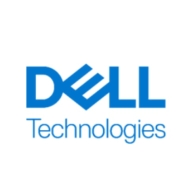

Red Hat Hyperconverged Infrastructure and Dell VxFlex Ready Nodes compete in the hyperconverged infrastructure market, targeting enterprises seeking integrated solutions. Dell VxFlex Ready Nodes often take the lead in performance and scalability, making them a compelling choice for larger enterprise environments.
Features: Red Hat Hyperconverged Infrastructure offers seamless integration with open-source tools, flexibility in hybrid environments, and supports cost-effective deployment. Dell VxFlex Ready Nodes provide robustness in scalability, outstanding performance, and adaptability to diverse workloads.
Ease of Deployment and Customer Service: Red Hat benefits from a straightforward deployment process supported by an active community. Dell VxFlex Ready Nodes provide detailed documentation and strong technical support, with a guided onboarding process that ensures smoother deployment.
Pricing and ROI: Red Hat typically presents a cost-effective initial setup, with ROI benefits from reduced licensing fees due to its open-source nature. Dell VxFlex Ready Nodes, despite a potentially higher initial investment, offer substantial ROI through enhanced performance and scalability for growing workloads.

VxRack FLEX and VxFlex Ready Nodes, also known as the Flex family, create a server-based SAN by combining virtualization software, known as VxFlex OS, with Dell EMC PowerEdge servers to deliver flexibility, scalability, and capacity on demand. Local storage resources are combined to create a virtual pool of block storage with varying performance tiers. The platform enables you to start small (with as little as four nodes) and scale incrementally. The Flex family provides enterprise-grade data protection, multi-tenant capabilities, and add-on enterprise features such as QoS, thin provisioning, and snapshots. VxFlex OS is the key enabler and provides an unmatched combination of performance, resiliency and flexibility to address enterprise data center needs. The unique features of VxFlex OS make it an excellent complement to Kubernetes for stateful applications, such as databases, continuous integration, logging and monitoring platforms.
Red Hat Hyperconverged Infrastructure - based on our leading OpenStack and virtualization platforms - provides co-located, scalable, software-defined compute and storage, driven by Red Hat Ansible Automation on economical, industry-standard hardware.
We monitor all HCI reviews to prevent fraudulent reviews and keep review quality high. We do not post reviews by company employees or direct competitors. We validate each review for authenticity via cross-reference with LinkedIn, and personal follow-up with the reviewer when necessary.